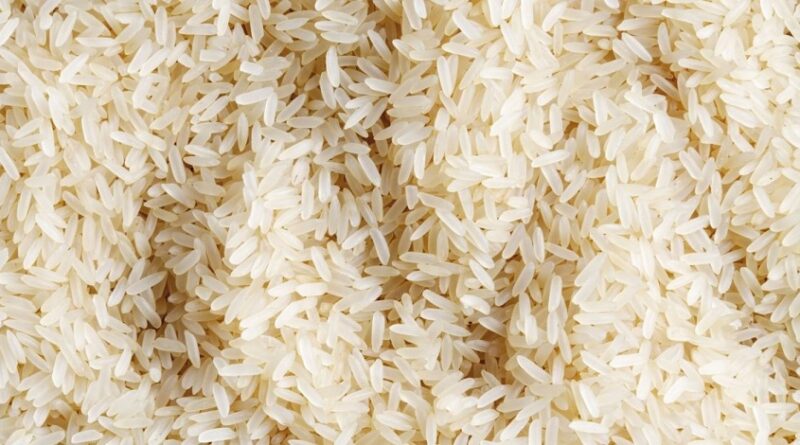Floods, El Nino effect unlikely to impact rice output in Haryana: Experts
By Neeraj Mohan
Despite floods, heavy rains and waterlogging in July as well as the El Nino effect in August, experts expect Haryana to have a bumper crop this year provided weather conditions remain favourable.
In the second week of July, 10,000 to 20,000 acres of standing crops were destroyed by floods in the districts of Kaithal, Kurukshetra, Fatehabad, Sirsa, Karnal, Ambala and Yamunanagar, reports from the state agriculture and revenue departments reveal. The overflowing Ghaggar, Yamuna and Markanda rivers flooded huge areas of paddy crops in the state.
Even the state department also reported a fall in paddy-sown acreage in the state compared to last year — this year, 32.50 lakh acres were sown, while 34.35 lakh acres were sown in 2022. But now the state government has set a target of procuring 60 lakh MT for this kharif marketing season against 59 lakh MT procured last year. Deputy chief minister Dushyant Chautala said despite floods a bumper paddy crop is expected this year as the state food, supplies and consumer affairs department is expecting the paddy procurement of 60 lakh MT and the state government has decided to make the payment to farmers within 48 hours of the procurement and ₹10,000 crore have been earmarked for this procurement. With 35 lakh MT (metric tonnes), Haryana’s share in total basmati production remains around 42%. The state also produces 55 lakh MT of parmal rice. Moreover, farmers in affected areas were able to resow the paddy and had enough time for re-transplantation.
Virender Singh Lather, retired principal scientist, Indian Agricultural Institute, ICAR, New Delhi, said, “Even though the floods in July had damaged huge areas under paddy crop in Haryana, most areas were resown by farmers. This year, the crop is healthy too. No pest attack has been reported in the state so far. With favourable weather conditions in the state, there is a strong possibility of a bumper crop.”
Rainfall above normal
According to Madan Khichad, head of the agricultural meteorology department of the Chaudhary Charan Singh Haryana Agricultural University, Hisar, between June 26 and September 4, a total of 377.9 mm rainfall was recorded in Haryana, which is 2% more than the normal rainfall of 369.3 mm. But less than normal rainfall was recorded in 11 districts in August. State agriculture department officials said less rain in August did not have any impact on crops as the sowing season was already over, but waterlogging and floods were the root cause behind the fall in the acreage of paddy in the state.
No impact of El-Nino
Most of the state’s paddy belts are under assured irrigation. Thus, in August when the El-Nino effect resulted in a dry spell and hotter-than-usual weather, the crop was already around two months old. However, agriculture experts predict an impact on output from parts of Fatehabad and Sirsa districts, as the paddy sowing in these areas depends on canal irrigation which was delayed due to the flooding of the Ghaggar river.
The rainfall figures of the India meteorological department (IMD) revealed that in the first month of the arrival of the onset of monsoon, Haryana had recorded 58% more than the normal amount of rain for the period, as the IMD data shows that between June 26, the date of monsoon onset in the state, and July 29, Haryana recorded 312.1mm rain against the normal of 197mm for the period. At least 19 districts in the state received normal or above normal rain while three districts received less than normal rain in the same period. In July, when the state witnessed floods in around 11 districts due to overflowing Yamuna, Ghaggar and Markanda rivers, Haryana received 230mm rain against a normal of 140mm rain. IMD figures also reveal that most of the northern districts had received more than double the normal rainfall expected for July. Yamunanagar received the maximum rain of 680mm, followed by Panchkula 668mm, Kurukshetra 520.7mm, Ambala 512 mm and Karnal 353mm.
Basmati yields higher than last year
Around 55% of the total area under paddy cultivation in Haryana is of the long-grained basmati varieties. The harvesting of early maturing and high-yielding varieties of basmati, including Pusa 1509, Pusa 1847 and Pusa 1692, has begun and the farmers said the average yield was higher than last year. “I have harvested two acres of Pusa 1509 and the yield has broken the previous record of 22 quintals per acre. This year it was around 23.50 quintal per acre,” said Naresh Kumar, a farmer in Indri, Karnal.
Haryana agriculture department, Kaithal, deputy director Karam Chand said, “Even if there was a slight fall in the area under paddy cultivation in the state, it won’t have any major impact on the rice output.”
The harvesting of early maturing varieties of basmati, which is purchased by private traders, has already started in the northern districts of Karnal, Kurukshetra, Yamunanagar, Ambala, Panipat and Kaithal. However, the harvesting of parmal rice, which is procured by government agencies, will start in October and continue till the end of November.
This article has been republished from The Hindustan Times.

